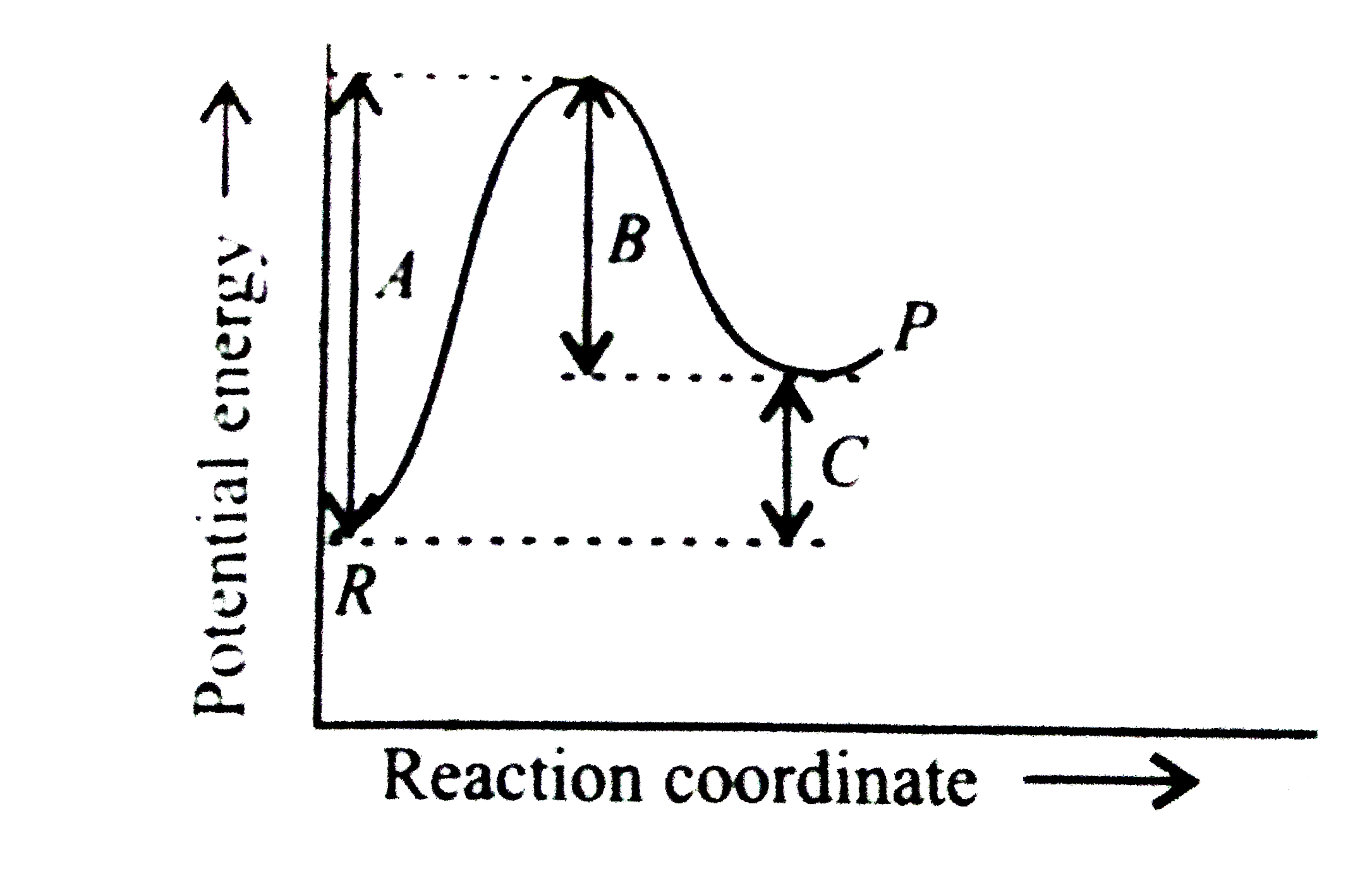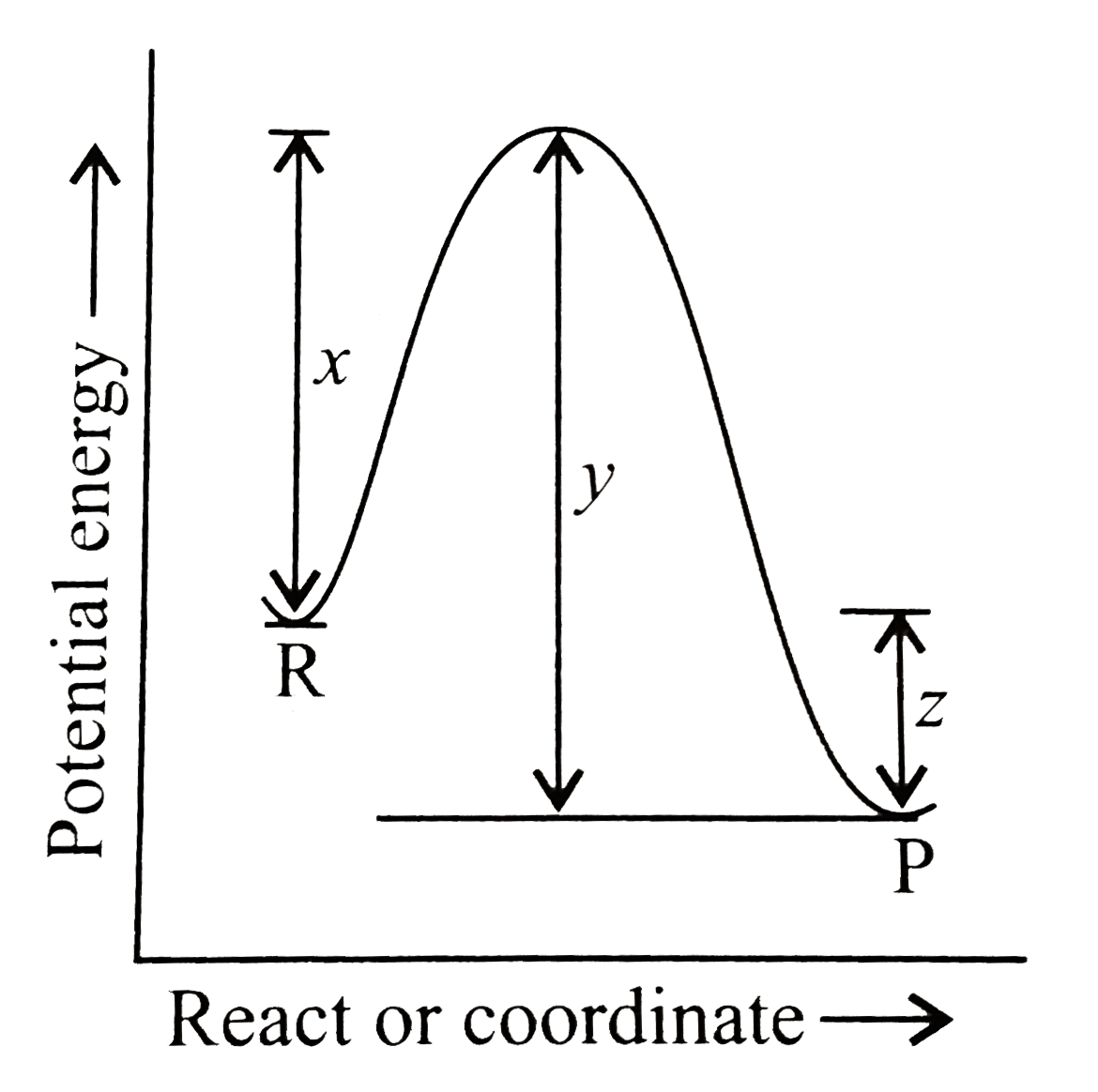The potential energy diagram for a reaction X→Y is given. A and C in the graph corresponding to

A → activation energy, C →ΔH∘
A → energy of reactants, C → energy of products
A →ΔH∘,C→ activation energy
A → activation energy, C → threshold energy
The correct Answer is:A
Step by step video & image solution for The potential energy diagram for a reaction X to Y is given. A and C in the graph corresponding to by Chemistry experts to help you in doubts & scoring excellent marks in Class 12 exams.
Updated on:21/07/2023Topper's Solved these Questions
- CHEMICAL KINETICSBOOK - NCERT FINGERTPS ENGLISHCHAPTER - CHEMICAL KINETICSEXERCISE - Collision Theory Of Chemical Reactions
6 Videos
- CHEMICAL KINETICSBOOK - NCERT FINGERTPS ENGLISHCHAPTER - CHEMICAL KINETICSEXERCISE - NCERT Exemplar
20 Videos
- CHEMICAL KINETICSBOOK - NCERT FINGERTPS ENGLISHCHAPTER - CHEMICAL KINETICSEXERCISE - Integrated Rate Equation
25 Videos
- BIOMOLECULESBOOK - NCERT FINGERTPS ENGLISHCHAPTER - BIOMOLECULESEXERCISE - Assertion And Reason
15 Videos
- CHEMISTRY IN EVERYDAY LIFE BOOK - NCERT FINGERTPS ENGLISHCHAPTER - CHEMISTRY IN EVERYDAY LIFE EXERCISE - NCERT Exemplar
15 Videos
Similar Questions
The energy diagram of a reaction P+Q→R+S
is given. What are A and B in the graphs?

View SolutionThe potential energy diagram for a reaction R→P is given below. ΔHɵ of the reaction corresponds to the energy

View SolutionThe potential diagram for reaction R→P is given below:
ΔH∘ of the reaction corresponds to the energy

View SolutionDraw the potential energy diagram for an exothermic reaction. Explain the terms:
threshold energy
View SolutionDraw the potential energy diagram for an exothermic reaction. Explain the terms:
overall energy change for the reaction
View SolutionDraw the potential energy diagram for an exothermic reaction. Explain the terms:
activation energy of backward reaction
View SolutionDraw the potential energy diagram for an exothermic reaction. Explain the terms:
activation energy of forward reaction
View SolutionThe potential energy of a partical veries with distance x as shown in the graph.

The force acting on the partical is zero at
View SolutionThe x-t equation is given as x=2t+1. The corresponding v-t graph is
View SolutionWhat can you say about the existence of A if the potential energy diagram for the reaction
A→B looks line

(a) A will exist
(b) A will not exist
(c) B will not exist
(d) A and B are in equilibrium
View Solution
